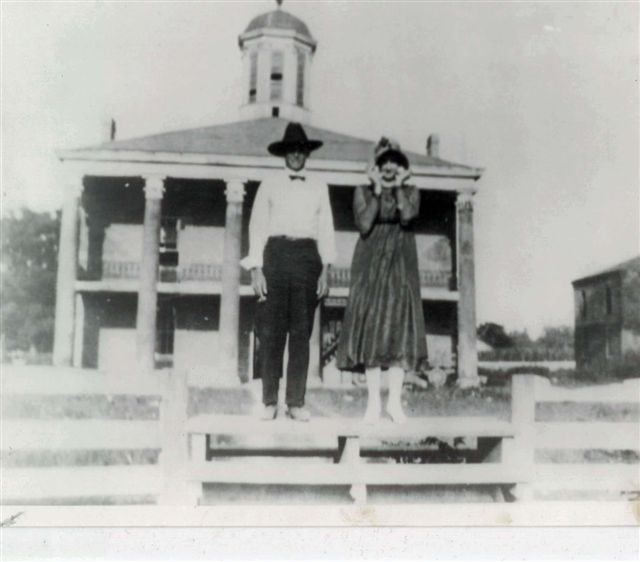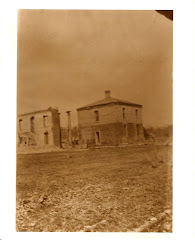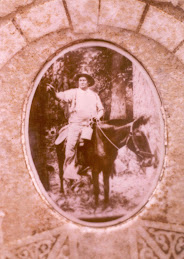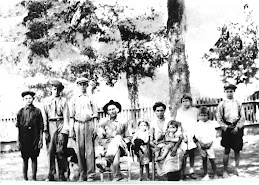The purpose of this historical study is to determine the similarities and differences between East Carroll Parish, Richland Parish, and West Carroll Parish in northeastern Louisiana. To accomplish this task I downloaded images of the 1900 U.S. Census from Heritage Quest for each of the three parishes.
I used images from the specific areas within each parish in which my ancestors resided.
I performed a random survey by adding five families to my database, skipping five families, adding five families, and so on. All data was entered manually. I skipped a few images that were not easily readable and included my ancestors whether or not they fit inside the five families recorded, but otherwise I kept to the original plan. I also consulted the images on Ancestry.com when needing clarification of information not easily read. Most of the data was very clear, but the surnames were sometimes my own interpretation; however, I was not as concerned with the surnames as I was with the other data provided. I only included surnames in my database for possible future reference.
Microsoft Access was used to record the data from 50 census images. The database for each parish includes 433 people equaling 1,299 total people surveyed. After gathering the data for each parish, I used Microsoft Access and Microsoft Excel to compare and analyze the statistics.
As with any historical study, some background information is always helpful. East Carroll and West Carroll parishes were previously one parish that was divided in 1877. Richland Parish was formed in 1869 from parts of its surrounding parishes including Carroll, Franklin, Morehouse, and Ouachita parishes. For boundary differences, refer to the maps at the end of this report.[i]
Occupations
Each of the three parishes has similar geographic characteristics. All are rural farming communities with farming being the main occupation. Many lakes, rivers, and bayous dot the landscape, as well as areas of dense timber. The Bayou Macon separates the Carroll parishes with East Carroll being entirely alluvial, subject to overflow. Farming land is only available in East Carroll on the ridges that follow the waterways; whereas, West Carroll has only two narrow strips of this type. Only 78 percent of East Carroll Parish land is used for agriculture and pasture and 95 percent in West Carroll Parish. Richland Parish uses 84 percent for agriculture, with most of its land situated in a flood plain.[ii]
This information helps us to understand why the number of people working on farms is lower in East Carroll Parish. Of the 433 people surveyed in each parish, 137 worked in some kind of farming occupation in East Carroll Parish, whereas, West Carroll Parish listed 194 and Richland Parish 204. Farming occupations included farmer, farmeress, farm laborer, day laborer, and farm manager. East Carroll Parish had the most diverse occupations of the three listing butcher, carpenter, clerk, cook, housekeeper, logging, merchant, night watchman, rail splitter, shoemaker, and washer woman as occupations other than farming. West Carroll Parish listed cook as the only other occupation.
The most obvious statistic I noticed while entering data was the great number of wives and children who worked on farms in Richland and West Carroll parishes. Generally by the age of ten, children were working as farm laborers, girls and boys alike. In East Carroll Parish, very few children or wives worked, and many children were listed as “at school.”
Black/White Ratios
The black/white ratio was the most surprising statistic. In West Carroll Parish 30 percent of the people were white and 32 percent in Richland Parish, but East Carroll Parish was only 5 per cent white. Because the parishes were not completely surveyed, it’s possible that the area surveyed in East Carroll happened to be more black than white. With the diversity of occupations in that parish, I would have expected East Carroll to have a higher percentage of white people rather than lower.
Something should be said about total population at this point. The population counts in 1900 for East Carroll and Richland were similar being 11,373 and 11,116 respectively. The population for West Carroll Parish was only 3,685.[iii] Assuming that the cross-section of people surveyed was typical for each parish, 1,106 people in West Carroll Parish were white. Even though the percentage of white people in East Carroll Parish was low, there were still 569 whites. Richland Parish’s percentage of whites, along with its higher population, makes it the parish with the majority of white people - 3,557. This could be a possible reason why one of my ancestor families moved from West Carroll to Richland Parish. I’m sure that some black/white tension still existed in that area of the United States at that time.
Male/Female & Read/Write Ratios
Male/Female ratios were fairly equal. They compare as follows:
· East Carroll – 50% male & 50% female
· Richland – 52% male & 48% female
· West Carroll – 46% male & 54% female
West Carroll Parish was the only parish in which more women than men could read.
Can Read
· East Carroll – 20% of men & 15% of women
· Richland – 21% of men & 20% of women
· West Carroll – 21% of men & 22% of women
Can Write
· East Carroll – 19% of men & 15% of women
· Richland – 18% of men & 15% of women
· West Carroll – 20% of men & 20% of women
Families & Rent/Own Ratios
The average number of children per family was calculated counting only those families with children and also counting only children under18 years of age. East Carroll Parish had 180 children, and the average number per family was 2.77. Children in Richland Parish numbered 204 with 2.96 per family, and West Carroll Parish had 217 children and an average of 3.1 children per family. These numbers seem to indicate that the people in West Carroll Parish had more children, which helped with the farming. The average age of the “Head of Household” was as follows:
· West Carroll – 38 years
· East Carroll – 41 years
· Richland – 43 years
In general, most people living in these parishes had little money and had to rent their property. Of the 253 people in East Carroll Parish who were 18 years or older, only 8 people were listed as owning their property. Ninety-eight people rented and 147 had no property. West Carroll Parish’s statistics were a little better with 216 adults, 17 people owning property, 123 renting, and 76 having no property. Richland Parish seems to be the most solid place to live with 30 people owning property, 68 renting, and 131 having no property. The “Head of Household” average age is consistent with the ownership of property as a younger person is less likely to own property.
Places of Birth
The majority of the 433 people surveyed in each parish were born in Louisiana. West Carroll had the highest percentage at 80 percent and East Carroll and Richland both at 72 percent.
The most common places to be born other than Louisiana were Mississippi (8%) and Alabama (6%). Birthplaces of parents were a little more diverse. The most unusual birthplaces of parents for all three parishes surveyed were England (7 parents), Germany (8 parents), Ireland (17 parents), Scotland (1 parent), and Sweden (12 parents). All other parents were born within the United States. West Carroll Parish had the highest number of parents born in Louisiana with 61 percent of mothers and 47 percent of fathers.
Only six percent of the children in West Carroll and East Carroll parishes were not born in Louisiana. In Richland Parish, however, 13 percent of the children were born in places other than Louisiana. Other places of birth for all three parishes include Alabama, Arkansas, Georgia, Indiana, Mississippi, North Carolina, Ohio, South Carolina, Texas, and Sweden (2 children).
Conclusion
The study of these three parishes has given me a better overall view of the lives of my ancestors. Before doing this study, I felt that East Carroll Parish was the most ideal parish in which to live. Before Carroll Parish was divided into the east and west parishes, the county seat was moved from West Carroll to East Carroll. East Carroll seemed to be the most modern, up-and-coming community. As per this study, more children seemed to be attending school. The occupations in this parish were more diverse, possibly attracting immigrants with specialized occupations.
Those who loved farming and a more rural atmosphere would probably have preferred West Carroll Parish. Those who wanted to live in communities that were more white than black, would have preferred Richland Parish. Much opinion should be given to the personal preference of individual families as to where they resided, but this study shows all aspects of the differences in these three parishes so that a researcher will know what other aspects might have influenced a decision of where to live.
[i] Louisiana parish census maps, online http://www.mylouisianagenealogy.com/la_maps/la_cm.htm, data downloaded 10 November 2007.
[ii] Louisiana parish information, online http://www.enlou.com, data downloaded 8 November 2007.
[iii] U.S. government census population counts for Louisiana, online









1 comment:
Thanks for posting this Terry! We have subscribed to your blog as we conduct genealogy research for East Carroll Parish. Our blog is at http://atlasfamilyorg.blogspot.com
Post a Comment